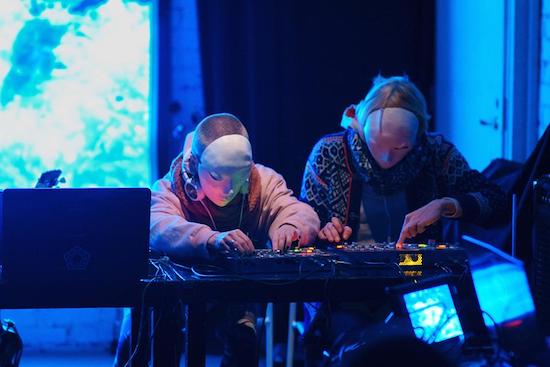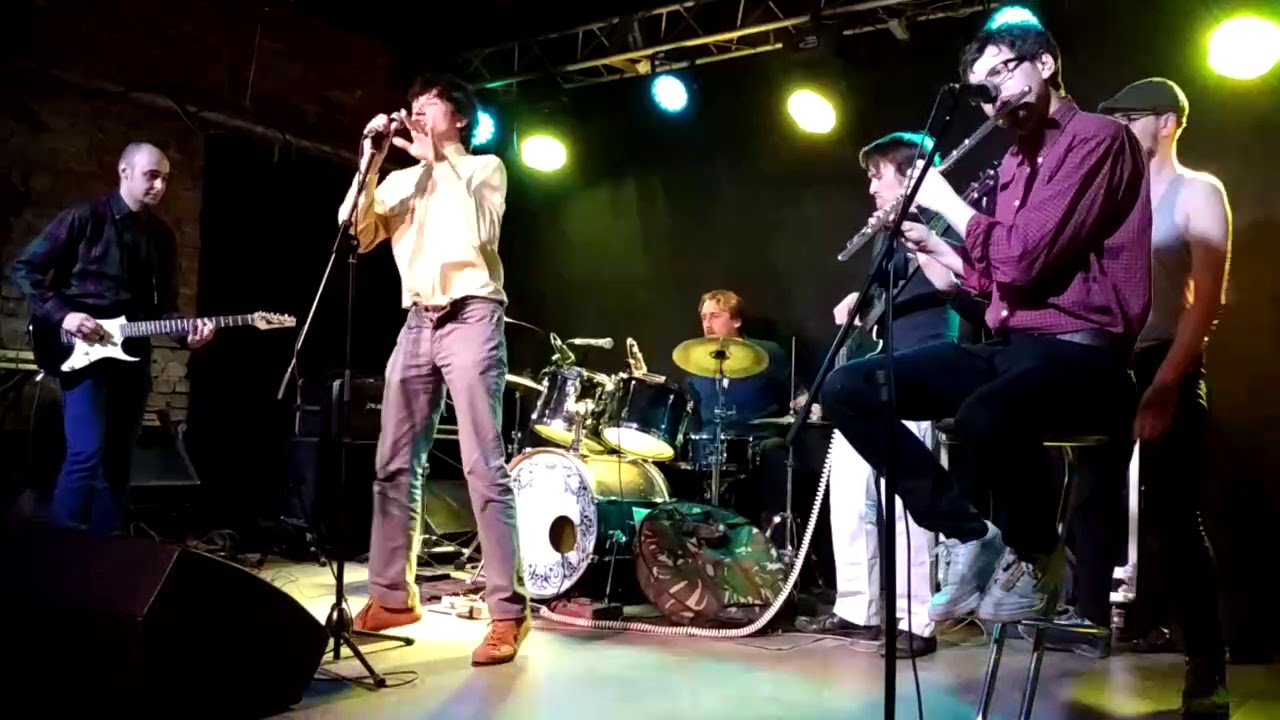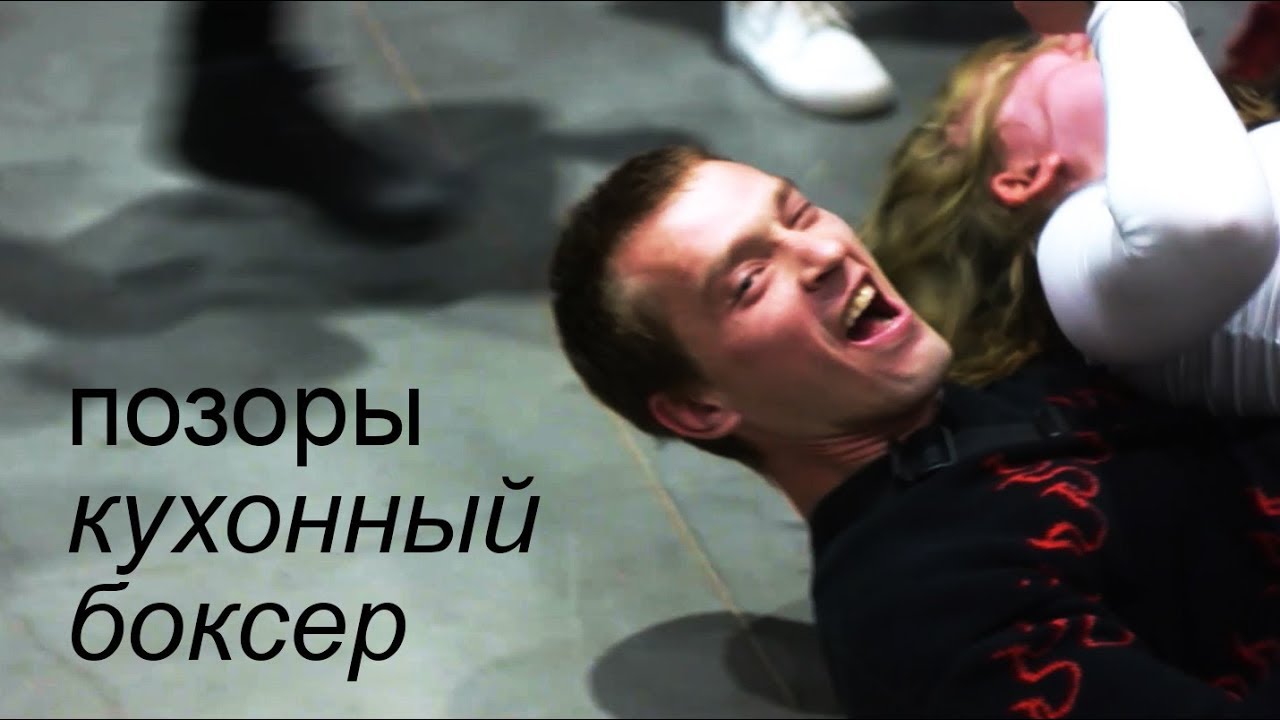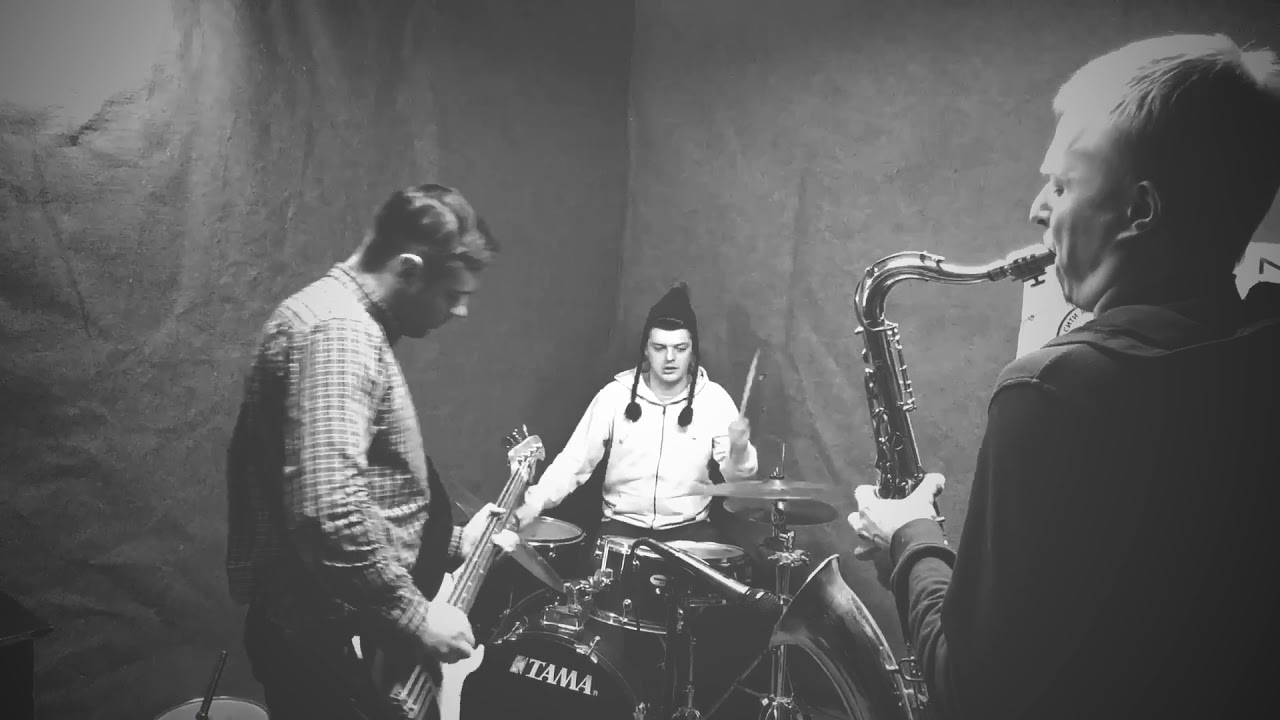TW: discussion of violent sexual assault
Rather than (stupidly) attempt to set down any kind of synopsis of weird Russian sounds outside of Moscow and Saint-Petersburg, we’ve collated what we definitely know and what has been directly suggested to us. That’s why the selection here will seem arbitrary and woefully incomplete. To requote my friend Natasha Padabed, Russia is, “bigger”. In any case, articles on Russian underground music pop up elsewhere to remind us that this series is at best a stab in the dark.
Russia – What The Void Demands
There’s an old joke that there’s no life outside of MKAD (the big road that circles Moscow). You can quote another joke, too; that Moscow and Saint-Petersburg and the rest of Russia are two different countries. There’s a reasonable amount of truth here, as some of the social and economic differences between the two big cities and the rest of Russia are quite overwhelming. These situations often find reflection in music and other artforms.
The two capitals have the money, the audience, the gear stores, the labels and the media. Many people move to one or the other to fulfill their potential. That’s the deal with Inturist’s Jenya Gorbunov (Khabarovsk to Moscow) and Shortparis (Novokuznetsk to Saint-Petersburg). And that’s why I moved from Yekaterinburg to Moscow myself.
Social and economic matters on the ground are the main obstacles to making and developing music in provincial towns and cities. Wages can be three or four times lower out in the sticks than in Moscow, and some provincial cities look like they were abandoned years ago. Local bar and club owners are understandably more interested in pushing drinks than nurturing alternative music. Though there are places in the land that try to copy Moscow venues like DOM or 16 Tons; staffed by people who are committed (or desperate) enough to work, as we Russians call it, “into minus”, just for the sake of keeping a scene going. There is a weird lack of information, too. As, despite the Internet, it still feels as if there is an unseen barrier to how information travels outside the Big Two. Potential audiences are still largely uninformed of certain kinds of music or alternative ideas. For one, lots of provincial bands still don’t use Bandcamp or Soundcloud, preferring VK, which makes things a bit harder to get a wider message out. And though there’s a growing demand for the provinces to be properly represented in the media, Moscow and Saint-Petersburg journalists don’t often venture outside of their bubble. Simply because the creative media is run by youngsters living in the capitals.
So why even bother with the Russian regions? Because they are the ultimate source of raw, desperate creativity which lives on no matter what. The vibe I get from Russian youth culture in general nowadays is not easy to explain. It’s like getting into a fight you know you’re going to lose, but even if you win you’re still aware of mortality of all things and that nothing will hold for long. Full scale Dostoyevsky. Maybe it’s what the void demands.
(Dmitry Teckel)
“Chthonic Shit” And Dark Ambient/ Folk
Chthonic shit and existential philosophy is really just a part of everyday life here. But limitations are what art is often born from, so maybe one can consider the current state of things a positive. One area where necessity and spirit come together in a pretty positive way is something called Dark Ambient (yes, just like Dark Jazz). Without getting too deep into it, it’s a very peculiar and obscure movement that originated in the Ural region, based upon an idea of being connected to the roots, nature and history of the country. It offers a look on this stranger side of Russia which it manages to capture rather well, but it’s probably just too obscure to include it here. Dark Ambient goes hand in hand with folk, and there are two really outstanding projects (away from the Urals) in this field.
#1 Рабо́р (Rabor)
One folk project is Kostroma’s Rabor, who base their music on history of Russian villages and the instruments that were played in them, using themes traditional to the countryside. They are really dedicated and intelligent people.
#2 Ored Recordings
Another folk-based initiative is Ored Recordings, a proper research project under the guise of record label. There’s a great personal story behind how two heads from the Caucasus decided to dig into their national music as a countermeasure to the terrible turbo-pop they heard on the radio. They started to visit villages and releasing everything they could record from those in the region who can still remember their (musical) roots. Dipping through this catalogue can be a beautiful and mesmerising experience. There are a couple of documentaries to hunt down as well.
For a more conventional, folk-like music, there is Pomni Imya Svoe from (the western city of) Orel, a beautiful, powerful act which drives me to tears with some of their songs; the one above in particular.
(Dmitry Teckel)
Punk’s Not Dead In Tambov, Tver And Bryansk!
There is a DIY punk uprising on Moscow’s doorstep, boiling over in nearby towns such as Tambov, Tver and Bryansk. These microscenes are given shape by Maxim Dinkevich from Sadwave webzine, who curates a series of showcases in the Moscow “Ruin Bar”, Uspekh. Each evening is dedicated to the scene of a different town, and so far there have been a handful of editions with a lot of noise and fun. Punk is a broad term here as a number of acts mess about with the punk formula, pushing it into quite poppy, or hardcore directions. Despite some polish applied here and there, many of these recordings do feel as if they are only made for a primarily local audience, or the international punk community.
#3 Kick Chill – Прикосновения (Touch)
One great example of the sharp noises pumped out from these scenes can be heard with the committed duo Kick Chill from Bryansk; whose strident, no-nonsense approach to kicking out the vocals put one in mind of Repetitor’s Boris Vlastelica.
Tambov sounds like a tough and committed scene, given the high octane screaming matches indulged in by the likes of YAMA. Further righteous punk kicks can be had by checking the video of Nozh ublyudka for some glorious locals-only action from in Pskov. Then there is Vmgnovenijah from Tver have a more polished, considered sound that has considerable punch. Their mix of punky emo also nods to the likes of Sugar and Balkan post-punk acts like XAXAXA. Poterannaya Yunost (also from Tver) have a similarly atmospheric, and often very moreish take on emo punk with (well it seems to these ears at least) a singer who isn’t afraid to work a bit of a Feargal Sharkey warble into his vocals now and again.
#4 Tihie Ulitsy Grety Garbo – Это был понедельник.Я превратился в собаку
One act that sounds like no other is the intriguingly named Tihie Ulitsy Grety Garbo from Bryansk, who seem, on the evidence of what they’re released thus far, to balance moody post-punk gobbets with an epic if raw form of punk-psych operatics (with the odd hippy flourish).
Back to the Sadwave zine, which is well known for being the main punk media outlet in Russia. Probably because of this they have a close friendship with Denis Alekseev, driver of the legendary Gazelle Of Death. The Gazelle Of Death is a touring bus that drives around Russia, Europe, Asia and sometimes Africa with all kinds of punk, metal and noise rock musicians on board. Over the years this vehicle, much repaired, has become a living symbol of a tough DIY scene that continues to operate under the radar, known to only its initiates.
(Dmitry Teckel and Richard Foster)
Yekaterinburg – East-West Tricksters
Yekaterinburg stands on the very border between Europe and Asia. I know this city better than any other because I lived there and have a certain place in my heart for anything related to it. It is arguably the third largest city in Russia, with a lot of active young people trying to set it on the same cultural level as Moscow and Saint-Petersburg. For a long time Yekaterinburg was known for boring, overly-produced indie, but recently there has been a trend for raw, noisy garage rock made by acts like лиз шерман (Liz Sherman) and Skookiny Deti who describe themselves as “inspired by the Australian wave and the cold streets of Yekaterinburg”. There is also an emo revival of sorts, which you can hear in the music made by bands like Pekinskiy Velosiped. All of this scene is pretty much on par with what happens in the capitals.
Electronic music here is mainly represented by techno. The city is known in Russia for its club culture, but it’s pretty mainstream stuff on the whole. There are a couple of solo projects that stand out for me personally though; one being Katya Yonder, who used to sing in an indie band and then became one of the most notorious electronic producers in the city. Yonder makes spacey, pretty kooky but very accessible chill out music. Then there’s Ficus, who reminds me a lot of raw synth scenes or acts like Posh Isolation.
#5 Vitamin Youth – Старые Валютчики 2019, Екатеринбург
Venturing towards the experimental side, we have Vitamin Youth. The ‘Youth are a collective of avant-garde poets who make an endless sonic and verbal stream-of-consciousness. They have a peculiar knack of participating in pretty traditional rock band contests and kicking off with something like the track in this video.
#6 4 Pozicii Bruno – Лунная Мистерия
4 Pozicii Bruno are local veterans who are able to produce unbearably beautiful lyrical compositions and angry in-your-face electropunk. They are continually be on top of things, even though they’re making music for something like 15 years.
We must also mention nim_b who play an important part in the city’s cultural landscape and do a lot to hold the alternative community together. They have a number of side projects and take a lot from Coil and 90’s mushroom electronics like Shpongle, but they are probably best seen live.
DT
On The Edge: Rape Tape And Siberia
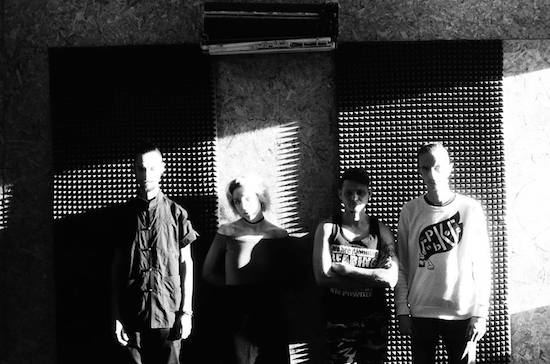
Siberia. It’s the biggest, coldest, strangest and emptiest region you could think of, still mostly covered by unpassable forests and swamps. There are some big cities here, but not a lot of people, so not a lot of bands respectively. Still, there are a number of notorious acts: and one is Rape Tape.
#7 Rape Tape – Дева (Virgo)
Rape Tape have been a huge revelation to those who have seen them. They’re powerful, gripping and uncompromising. But then there is the name… There are still a lot of questions raised in the wider Russian scene around it, but the band insist they stand strongly against rape and any other violence.
The band name refers to a recent, very public case when a man killed and raped his female roommate and then posted a detailed suicide note on VK. A widespread victim-blaming campaign started soon after; the case even appearing on national TV. People dug out the victim’s private photos, messages, and even pictures of her body.
They gave us this statement:
"There are numerous victims of sexual violence. You can be a girl with bright hair and clothes. And some guy with a mental illness can rape and kill you. And then the whole country starts to discuss this on national television and internet. Call you names and say that you were guilty. They write stupid comments on social media and laugh at you. People rape those victims again and again and then just forget about them. It becomes one big rape tape and no one can do anything with that. People just lose their minds and show themselves as pieces of shit who will laugh at someone’s grief. This is one of the main diseases of society and we are surprised that no one else calls their bands like [ours] to show everyone this nightmare."
They are still based in one of the furthermost points of Russia. Khabarovsk is in the Far East, near China and Japan. Another good band from Khabarovsk that plays in a similar key is Raflesia, with whom Rape Tape recently released a split record.
A couple of other uncompromising acts hail from two cities: Omsk and Tomsk. Shumnie i ugrozhaushie vihodki (from Omsk) are the city’s answer to Death Grips. They usually invite guest musicians to write music for their releases and then do their thing around that. Their name means “noisy and intimidating acts’” which is pretty fitting.
#8 Pozori – Кухонный боксёр
Pozori hail from Tomsk and make a very individual kind of noise that swallows up all sorts of hardcore, drum & bass and gabber.
#9 Жарок (Zharok) – Джан (Jan)
Then there is Жарок (Zharok), an interesting sounding guy from Krasnoyarsk who uses the tag “Siberian Plant Species” on his Bandcamp and makes very strange psychedelic pop.
DT
Righteous Grooving In Nizhniy Novgorod
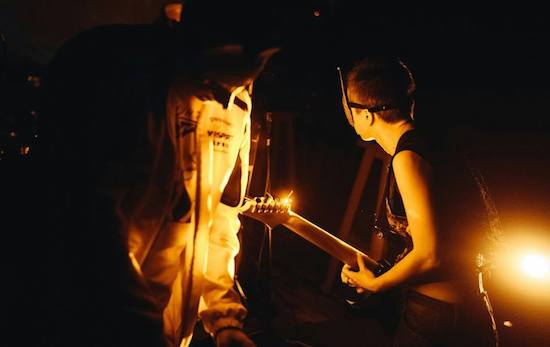
Weirdly enough, the genus for this next passage began in the bar at WORM, Rotterdam, where I “work”. A Russian band – booked by an ex-colleague – was playing up the road, and had popped in for a drink. We fell into conversation and over the course of the next couple of days I learnt about the remarkable gender non-binary couple duo who go by the name of Crimson Butterfly. They are a restless pair who describe their rave-ups as “metalized percussive discotheque”. Omnivorous giggers, they are just as likely to be found tearing up a snooty artspace in Munich as hosting a rave in their home city. Yet they seem quite attached to “NN”, which seeps through Serge’s descriptions of their city; “splendid natural landscapes and pompous architecture contrasts with pictures of urban disaster everywhere; such an insane place can disgust and haunt you at the same time.”
Inevitably (and sadly) Crimson Butterfly’s artistic expression of their life choices, including lengthy industrial improvisations and androgynous, “sometimes creepy” looks, are not considered kosher. Serge quotes “stubbornness” as both their driving force and salve in the face of a fair amount of pressure. “This is not what your family expects from you. This is not what society expects from you. This is not what you are meant to be when you live in a hybrid-authoritarian state with government-endorsed queerphobia, narcophobia, any-kind-of-fun-phobia.”
#10 CEMNN – Volume 3
But Crimson Butterfly believe that an alternative, “future Russia”, albeit yet to emerge, has laid down creative traces in Nizhniy Novgorod. There is a local scene concerned with advanced electronic music practices; one that has existed since the 1990s. Most of it is captured on the splendid “CEMNN” series of compilations of local avant electronica. (Watch out for volume 4, which is being prepared for release in the coming months.) There is also a small VK community based round this collective which has a good collection of posts from active artists and an archive of videos and pictures from live events.
“Black Holes, Dark Dance And Black Metal”
Another cornerstone of the local experimental scene is the electro duo St.Fractalium whose multilayered complex polyrhythms and fractured soundscapes are not for the faint-hearted. One of St.Fractalium, Vladimir Sokolov, is the art director of the scene’s main club, Black Hole. The space acts as a residency for various kinds of local bands – mainly psych, prog and grindcore – and frequently hosts gigs by their international peers. Together with punk club Stanok, the venue functions as the main hang for Nizhniy Novgorod’s guitar scene. Black Hole increasingly hosts experimental dance nights (run by Crimson Butterfly) and attracts those who make marginal music in the local dance scene; such as the label and promo group, Volna (a.k.a. All Night N.N.). Another prominent act is Technodevil, who specialise in “the dark side of the dance”. Last but not least is the “creepy looking showman” DJ plohoi_meh, and one of the coolest Nizhniy Novgorod’s contemporary artists Yuri Otinov, also known as Mal Corpse. Otinov’s range of beguiling horror masks can be interpreted, according to Serge Crimson, as “a modern cultural symbol” of the city’s underground.
#11 General Grievous – What Do You Do At The End Of The World?
Perhaps Nizhniy Novgorod’s most successful musical export are extreme metal acts, such as Brutal/Death outfit, 7H Target and post-black metallers, Magik Black. But for me the industrial-strength doom sludge of General Grievous deserves special mention. Their music is a headcrushing mix of (wyrd) metalcore and sludge, topped off with the kind of hair-dryer vocals that veer on the inhuman.
RF
Staring At The Forest, Darkly: Stavropol’s Metal Scene
"Hello, my name is Oleg Gabrielyan, and I work under pseudonym Helge Gabriel. I am a musician [in local Black Metal act Voice Of Hastur], sound engineer and sometimes a producer, working with artists based in Stavropol, from my small home studio.”
Oleg’s studio is based in the basement of the Gabrielyan family house (replete with kitchen garden), in an old, residential part of Stavropol in Southwestern Russia, adjacent to Tamanskii Forest; a place frequented by Tolkien fans and those who get their kicks from historical reconstructions. Fittingly perhaps, Oleg’s one-man project История секиры (History Of Battle Axe), is a heady take on Viking metal, in the main inspired by Norwegian legends Bathory. The debut record (with each song serving as a chapter) is based on a story of a Varangian warrior, who regrets past deeds and fights the undead from Slavic epic tales.
According to Oleg, Stavropol was one of the first Russian cities where local Black Metal bands started to appear, around 1993-1994. Acts such as Harpia, Winter Majesty, Baal Zebuth, and the (still extant) Thrash/Grind/Death metal act, Cancroid, set the scene for a second wave of acts at the turn of the millennium. These newcomers included Baphomet (Ambient-Electronic/Dark) Tarthak (Black), Azathoth (Black/Death/Thrash) SS-18 (Black), Некоты (Alternative rock), Зиккурат (Death), Trust x (Progressive), Магистр (Heavy) and lone punk rockers, Acetone.
The current scene encompasses Oleg’s own solo project (see above) and band, the mighty Voice Of Hastur, who take inspiration from “mythology, war, the works of Howard Phillips Lovecraft, both old and new schools of Death and Black Metal, and the music of Mayhem, Slayer, Bathory and Watain”. Other acts of note shaping this third wave are Tarthak who immerse themselves in all the aspects of classic Norwegian Black Metal. Then there is the energising thrash kicked out by Voroth; a committed and busy Thrash/Death metal band who come from “nearby” Nevynnomyssk. More intransigent and darkly apocalyptic viewpoints are presented by Petersburg’s late Disinter 666 who boasted one of Stavropol’s best metal musicians, and the Prog/Death metal of TEKNA, who hail from Pyatigorsk, “near the Uranium Mountain” (also the residence of the similarly misanthropic C19th poet, Mikhail Yuryevich Lermontov).
#12 Bongtower – Mirage
Something different is offered by Bongtower. This powerful psychedelic stoner act are inspired by Electric Wizard and Red Fang and make rich, unhurried and atmospheric music, with swathes of body-shaking fuzz guitar to boot. They seem to be into space travel too. According to Oleg (who thinks they’re really cool), their music is “not super welcomed” in Stavropol. Mental.
Asked why the heavier, maybe more contentious elements of metal provide such a dominant presence in Stavropol’s underground scene, Oleg states that although Stavropol is pretty southern, it can still be “a very a cold place”. Maybe regular (socio-economic) doses of the “Chthonic shit” mentioned above mean many locals see this kind of music as the most relevant way for them to express their feelings. Oleg also adds that the local metal live shows “are really blood-shaking” giving “young people looking for some excitement” something to hold on to.
RF
Creative Scenes In The West And South
Kaliningrad is a Russian outpost amidst Baltic state, effectively torn away from the rest of the country. I was very surprised to hear that they have their own Dark Jazz scene (oh yes, more of that) driven by BLEDNYJ and the great-sounding Amazing Sex People; though I’m not sure if they have any studio recordings. All of this scene sounds a lot like what happens in Moscow.
#13 Amazing Sex People
Then there is Rostov-on-Don, a southern city nestled on the big and beautiful river Don (which flows into the Sea of Azov). Rostov has a strong musical history. Most will know Motorama, probably one of Russia’s most well-known bands. The climate there is pretty mild and warm and probably why the local label, Hjördis-Britt Åström releases a lot of music that pretty much fits that description. On a totally different note, a trip to nearby Samara brings you into contact with the loud and energetic post-hardcore punks, WLVS.
#14 Utro – Такие глаза (Such Eyes)
Some may also know that the legendary post-punkers Utro come from Rostov. Utro make a seductive, low key take on the genre, where stripped down melodies and a very detached vocal style compete with insistent rhythmic patterns. The abrupt endings only add to the overall effect. It’s incredibly effective, but weirdly soulful music that worms itself into your mind. It’s difficult to dislodge.
DT & RF
[ENDNOTE – from Richard]. Writing this piece alone would have been an act of breathtaking rudeness. As well as my good friend Dmitry Teckel, I give heartfelt thanks to Aneliya from Cheekbones and her bandmate Slava’s brother, Oleg Gabrielyan; who will doubtless be busy staring out at the Tamanskii Forest, thinking Viking thoughts. The righteous gender non-binary couple Ellen and Serge Crimson should take a bow for being too much of everything. And, as ever, thanks to the many Russian friends and contacts on the ground – in this chapter’s case Sophia – who have helped push this series along.]

